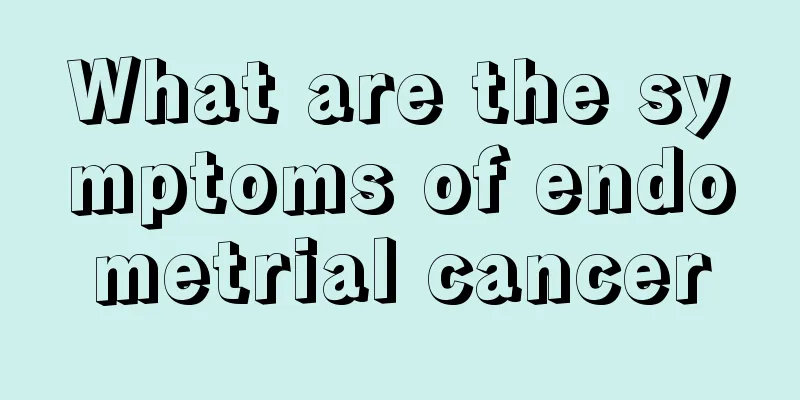What should I do if I catch a cold during radiotherapy

|
Radiotherapy and chemotherapy are ways to treat diseases. We often see on TV people with shaved heads and then pushed out of the ward with pale faces. The doctor says that this radiotherapy is completed. This is our impression of radiotherapy patients. Some are afraid, worried that their condition is too serious, and some are a little worried, after all, radiotherapy is not easy. For us, a cold can be cured by taking a few packets of cold granules, but what should we do if we catch a cold during radiotherapy? First check a routine blood test. If the neutrophil count is normal, take some cold medicine. Pay attention to exercising more and taking some Chinese patent medicine that can increase your immunity. A routine blood test refers to an examination that determines blood conditions and diseases by observing changes in the number and morphological distribution of blood cells. With the development of modernization and automation of testing, routine blood tests are now performed by machines. Routine blood tests include red blood cell count (RBC), hemoglobin (Hb), white blood cells (WBC), white blood cell differential count and platelets (PLT), etc., which can usually be divided into three major systems, namely the red blood cell system, the white blood cell system and the platelet system. Many specific indicators in a routine blood test are commonly used sensitive indicators, which are sensitive to many pathological changes in the body. Among them, white blood cell count, red blood cell count, hemoglobin and platelets are of the greatest diagnostic reference value. Many patients can undergo a routine blood test for auxiliary diagnosis when the cause of the disease is unknown. In addition, routine blood tests are also commonly used indicators to observe treatment effects, medication or discontinuation, continuation or cessation of treatment, disease recurrence or recovery. [Normal reference range] Newborn: (6.0-7.0) × 1012/L Infants: (5.2-7.0) × 1012/L Children: (4.2-5.2) × 1012/L Adult male: (4.0-5.5) × 1012/L Adult female: (3.5-5.0) × 1012/L Clinical significance (1) Physiological changes ① Increased adrenaline secretion caused by mental factors (impulsiveness, excitement, fear, cold water bath stimulation, all of which can increase adrenaline secretion) and compensatory red blood cell hyperplasia (low air pressure, hypoxia stimulation; long-term and multiple blood donations). ②The decrease occurs during pregnancy, rapid growth and development in infants and young children aged 6 months to 2 years, when the hematopoietic raw materials are relatively insufficient, and in some elderly people with decreased hematopoietic function. (2) Pathological increase is seen in frequent vomiting, excessive sweating, large-area burns, hemoconcentration, chronic cor pulmonale, emphysema, altitude sickness, tumors, and polycythemia vera. (3) Pathological reduction: ① Decreased red blood cell production, seen in diseases such as leukemia; ② Increased destruction, seen in acute massive bleeding, severe tissue damage and blood cell destruction, etc.; ③ Synthesis disorder, seen in iron deficiency, vitamin B12 deficiency, etc. 2. Hemoglobin (Hb) It is the main component of red blood cells and is responsible for transporting oxygen to organs and tissues and removing carbon dioxide from the body. The clinical significance of its increase or decrease is basically the same as that of the increase or decrease of red blood cells, but hemoglobin can better reflect the degree of anemia. [Normal reference range] Male 120~160g/L Women: 110-150 g/L Newborn 170~200g/L Clinical significance The clinical significance of its increase or decrease is basically the same as the red blood cell count, but hemoglobin can better reflect the degree of anemia. Anemia can be divided into the following categories according to its severity: extremely severe anemia, HbL; severe anemia, Hb between 31 and 60 g/L; moderate anemia, Hb between >61 and 90 g/L; mild anemia, Hb between >90 g/L and below the lower limit of the normal reference. |
<<: One-week menu during chemotherapy
>>: Can I eat Liangpi while losing weight?
Recommend
What to do if bitten by a mosquito
Summer is here and female friends will be very ha...
How to effectively repair lip scars
Due to various reasons, some people have scars on...
What is the most effective way to remove acne spots?
In recent years, everyone has paid more attention...
Will acne scars turn into spots?
Acne scars must be a very troubling existence for...
What are the types of gastric cancer
According to histological characteristics such as...
The first sputum in the morning contains blood
Blood in the first spit of phlegm in the morning ...
What are the symptoms of tongue cancer in children?
Every parent hopes that their children will be he...
Why does lung cancer cause bone metastasis? How to treat lung cancer bone metastasis
Why does lung cancer cause bone metastasis? How s...
How to care for patients with cerebral hemorrhage?
Cerebral hemorrhage, commonly known as cerebral h...
What is the reason for fever at the fracture site
When it comes to fractures, many people don't...
Is there any quick way to sober up?
Some social events are inevitable at work, and dr...
What are the hazards of bile duct cancer to the human body?
Being sick is a painful thing. Some diseases can ...
What to do to prevent pituitary tumors
When we are unfortunately diagnosed with a common...
What are the normal values of the six female sex hormones?
The six items of female sex hormones are relative...
What to do with acid reflux, you need to know how to deal with it
Gastric acid is the hydrochloric acid secreted in...









